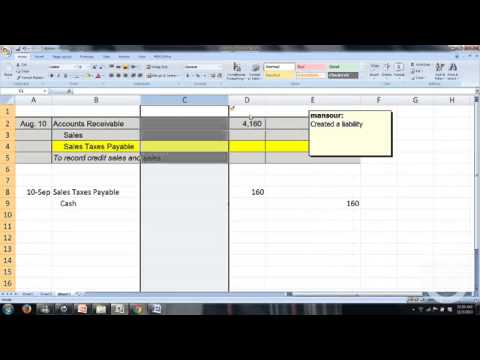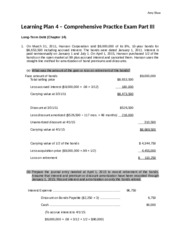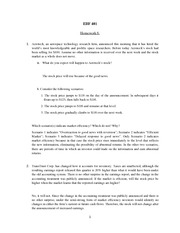Single-Step vs Multi-Step Income Statement: Key Differences for Small Business Accounting
Content

Due to the complexity needed in managing and collecting much data, multiple-step income statements can be labor-intensive for accounting teams to prepare. Report Multi-step income statements to report gross profit, as opposed to single-step income statements. Create a segment for the non-operating operations in the bottom area of the income statement, below the operational activities.

Our work has been directly cited by organizations including Entrepreneur, Business Insider, Investopedia, Forbes, CNBC, and many others. Our goal is to deliver the most understandable and comprehensive explanations of financial topics using simple writing complemented by helpful graphics and animation videos. Our team of reviewers are established professionals with decades of experience in areas of personal finance and hold many advanced degrees and certifications. The Multi-Step Income Statement is very efficient when analyzing a company’s performance. Use step one to calculate the Combined Multi-Step Multi-Entity Multi Step Income Statement Combined Operations. Use step one to calculate the Multi-Step Multi-Entity Statement by Parent Company or Multi-Level Multi-Entity Statements by Subsidiary.
Advantages and disadvantages of a single-step income statement
The income statement becomes the foundation for a forecast of future accounting periods. To do this, you subtract the cost of goods sold from the net sales. When we want to understand the in-depth analysis of the financial performance of the business. Here to arrive at the gross profit number, the cost of goods sold number is subtracted from the net sales. This is an important metric because it shows how effectively labor and supplies are used to generate revenue. You need a simple statement that reports the net income of a business.
A major benefit of a multi-step income statement is the demonstration of gross profit. Gross profit equals sales for the period minus cost of goods sold. This allows you to see how much the company is earning on sales before operating income is considered. Seeing detailed gross profit also allows you to calculate gross margin, which is gross profit divided by sales. For instance, gross profit of $15,000 on sales of $75,000 equals a 20 percent gross margin. Comparing this to previous periods and industry standards helps you determine how well your business is generating profit on sales.
Step 3: Calculating Pretax Income or Pre-Tax Earnings
An example of a multi step income statement is Arrow Electronics, Inc.’s Consolidated Statements of Operations for the calendar years ended December 31, 2021, 2020, and 2019. It’s available as a 10-K company filing in the SEC’s EDGAR database dated February 11, 2022. A Multi-Step Income Statement can be used to analyze company performance and allow for a more detailed analysis compared to a single-step income statement. Operating expenses are expenses that relate to the main income statement, advantage of multi step income statement and they include items such as general administrative costs, selling, and distribution expenses. Once all the items of Non-operating head are totaled, the net income for the period is computed by deducting or adding the total of the non-operating head from or to the income from operations. Company Operating ExpensesOperating expense is the cost incurred in the normal course of business and does not include expenses directly related to product manufacturing or service delivery.

In reality, that equipment is going to last longer than 24 months, which means the depreciation expenses on the income statement are not always a true reflection of the costs that are incurred. When all business actions are verified, revenue becomes income, and it is reported on the income statement. To do this, you add together your operating income and your non-operating items. Get instant access to lessons taught by experienced private equity pros and bulge bracket investment bankers including financial statement modeling, DCF, M&A, LBO, Comps and Excel Modeling. To artificially boost their margins, management could move spending out of the cost of products sold and into operations. It’s usually a good idea to look at comparative financial accounts over time to see trends and detect misplaced spending.
Counting The COGS: Inventory Accounting Guide
These total expenses can then be subtracted from gross profit to arrive at the operating income. From an accounting perspective, a drawback of the multi-step income statement is that it takes much longer to prepare than a single-step statement. Not only is each category of income separated, but within each category, the statement provides a detailed list of major sources of revenue and expenses. This means more time spent analyzing financial data and putting it into the statement.
All publicly-traded companies in the U.S. must adhere to Generally Accepted Accounting Principles , which are accounting standards issued by the Financial Accounting Standards Board . Caroline Banton has 6+ years of experience as a freelance writer of business and finance articles.
Include all non-operating revenues and costs, such as interest and the sale or purchase of investments. The publicly traded company most commonly utilizes multi-step income statements. The primary distinction of this kind of presentation is categorizing costs into direct (non-operational costs) or indirect . Management accountants use another type of multi step income statement for internal use that separates fixed and variable costs to compute the contribution margin.
The net income becomes diluted because the company has made a gain from selling real estate and recording it as non-operating revenue. The multi-step income statement categorizes operating and non-operating incomes and expenses. It helps users evaluate the financial performance of the organization.
What is the primary advantage of the multiple-step income step format?
A primary advantage of the multiple-step format of the income statement over the single-step format is that the multiple-step format: classifies expenses by function. Managers may engage in classification shifting by: reporting operating expenses as nonoperating expenses to inflate reported operating income.






